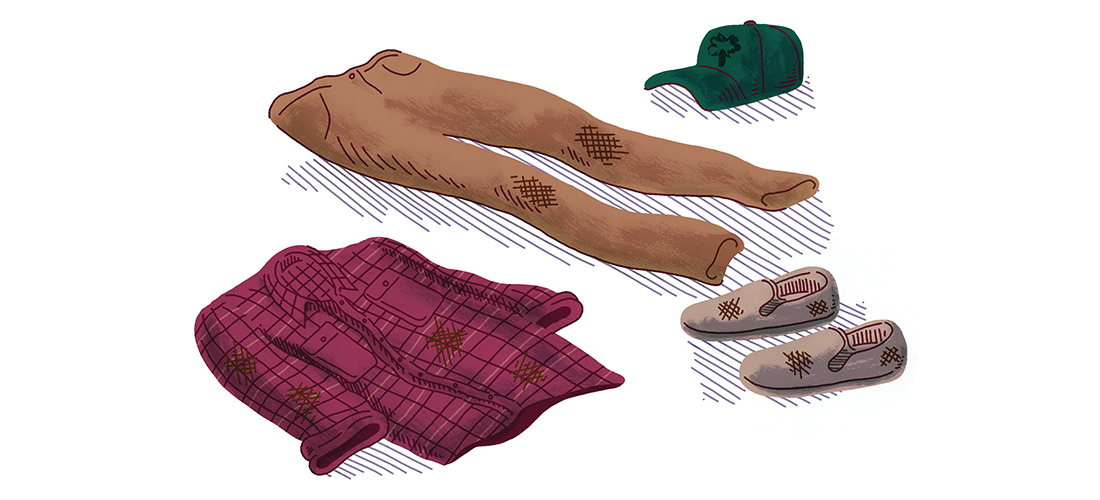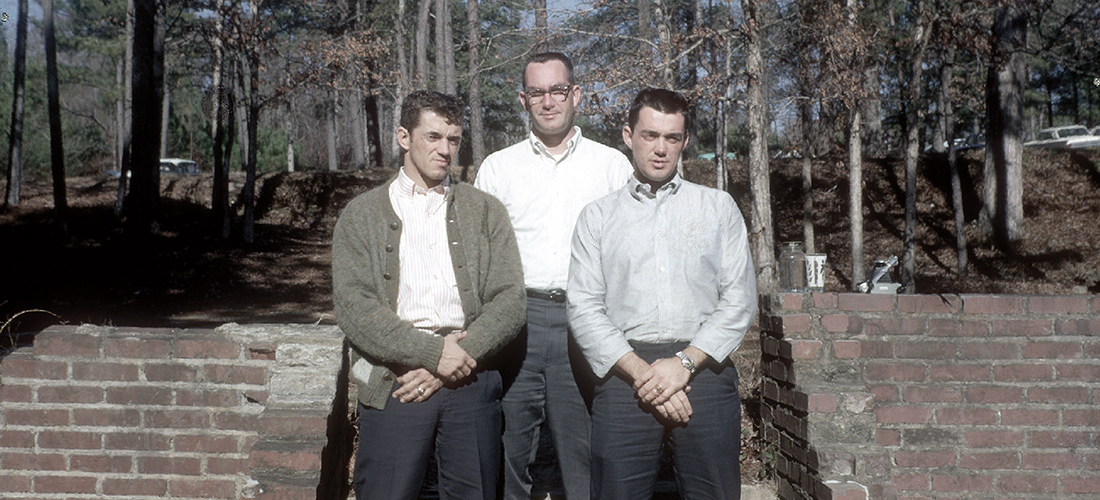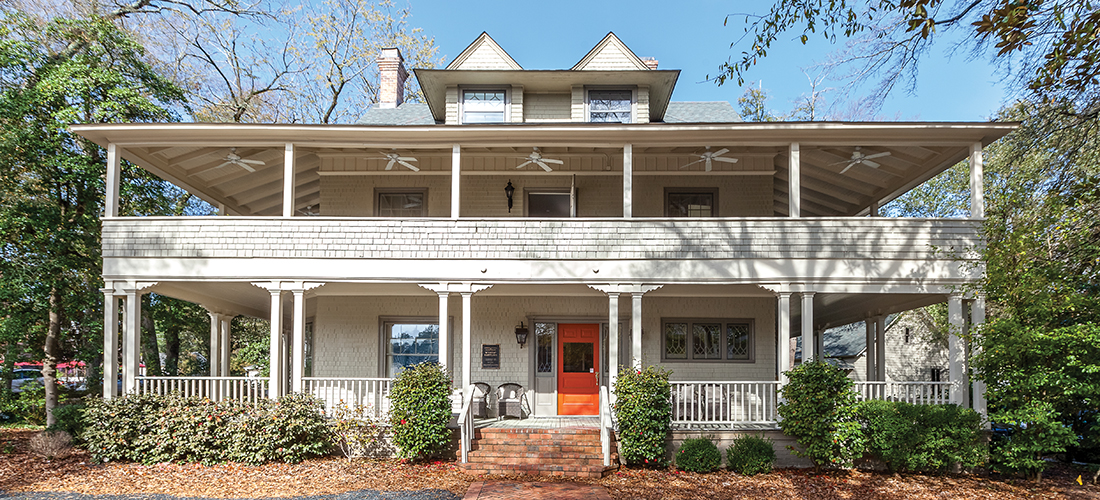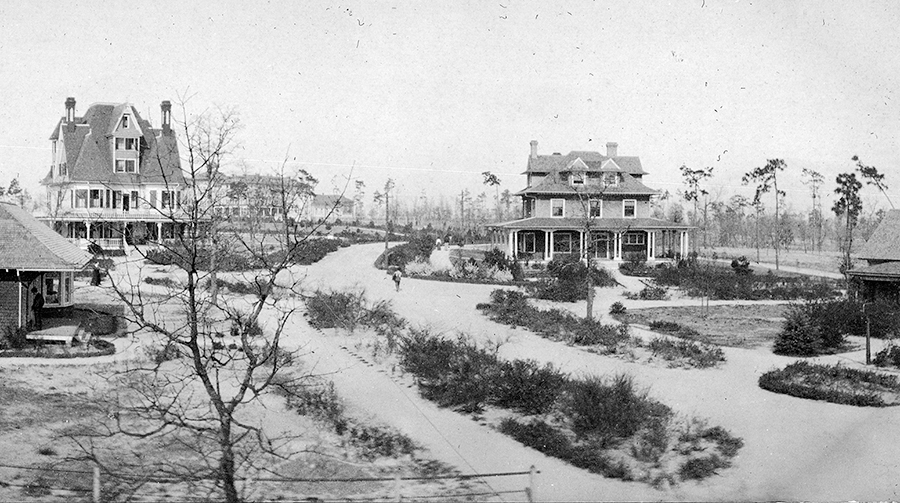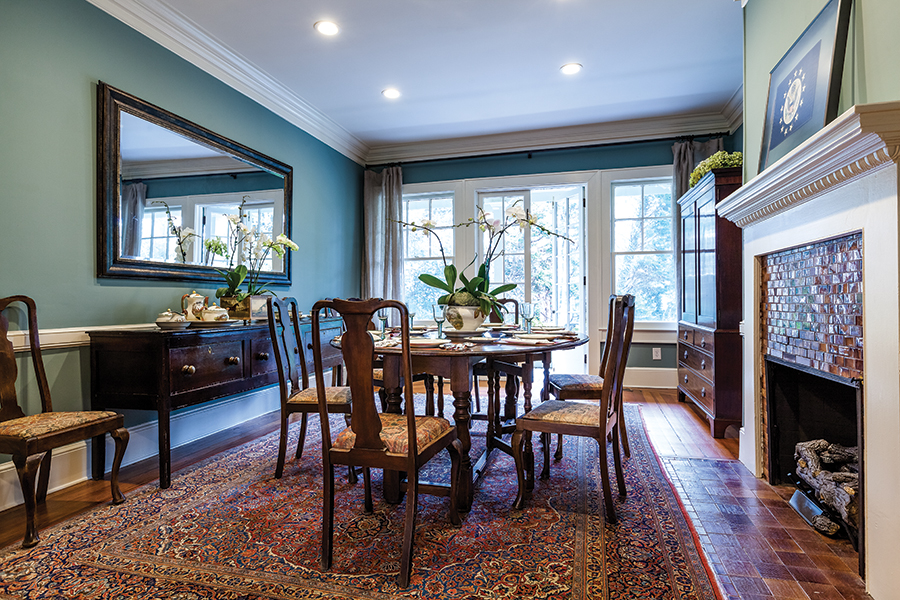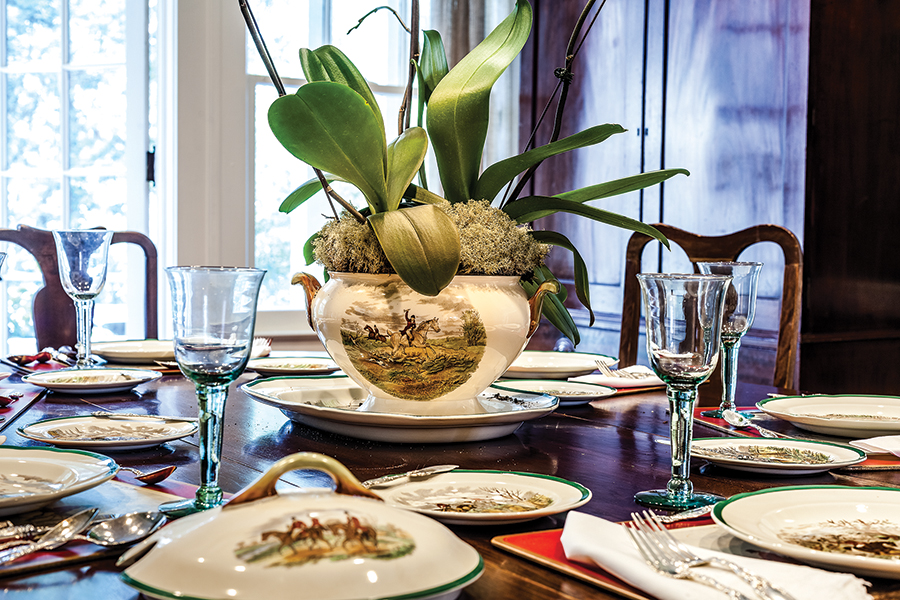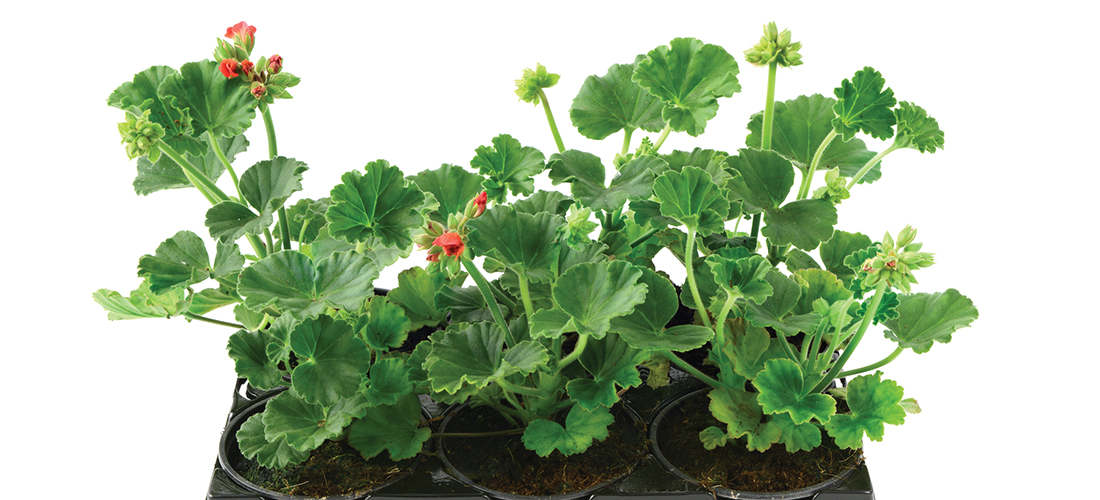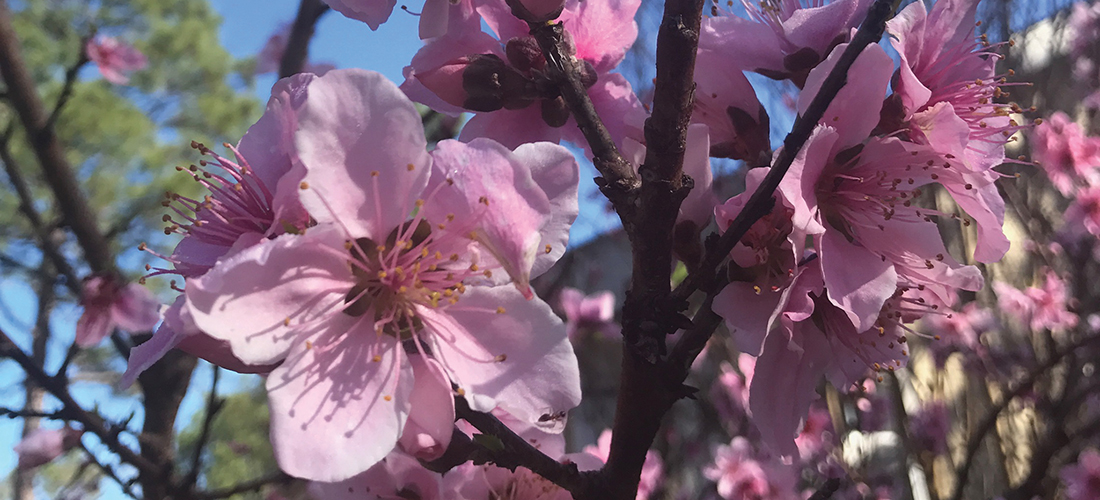Confessions of a Second hand Joe
By Jim Dodson
On a fine spring afternoon recently, I dropped by the office on the way home from a local garden center — part of a rare day off that I was spending at work in my garden.
The stylish Miz Bobbitt, chief social arbiter and majordomo of our crack magazine staff, took one look at me and smiled, making a wry comment on my “rustic” appearance.
To briefly review: I was wearing my favorite clothes, including my oldest gardening pants and most comfortable canvas shoes, both soiled from years of loyal service in the dirt; also my favorite flannel shirt (the tattered one with all the useful flap pockets), and my beloved — if somewhat faded and grimy — Pennsylvania Horticultural Society ball cap that once accompanied me through the wilds of South Africa with a group of crazy plants nerds in search of exotic species.
“This is how I dress when I work in the garden, my choice attire. I’m giving my garden a complete spring makeover,” I foolishly remarked.
“Well,” Bobbitt came back with perfect timing, “Maybe it’s time for you to have a big spring makeover, too!” She wrinkled her cute button nose. “And what is that smell?”
I pointed out that it was probably just the freshly composted horse manure I’d spent the morning hours working into my new perennial beds. Nothing like the smell of fresh, composted pony poop, I find, to get the blood moving and the spade digging!
Bobbitt, alas, didn’t seem overly persuaded by my argument.
“I know gardeners who at least look stylish when they work in their gardens,” she pointed out.
“My garden doesn’t care how I look,” I felt compelled to note. “Frankly, I could garden buck nekkid and my Ficus carica wouldn’t care a fig leaf.”
“Oh, please don’t,” came a second unseen female voice from deep in the office.
A third voice politely spoke up as well, also female, also quite clever and naturally stylish, also suggesting that the editor’s garden attire might do with a “nice tweak if not a complete spring makeover.”
A pattern seemed to be emerging. Was my late mom speaking to them from the grave? This was perhaps the only disadvantage of working in an office full of bright, savvy, stylish females.
“What sort of tweak?” I asked guardedly.
“Hard to know where to start,” said Bobbitt with a sigh.
“I’d start with the pants,” said coworker No. Two, shaking her head. “Those things look pretty frumpy.”
“And I think the shoes really have to go,” said my third impromptu style advisor. “They look like you found them in someone’s recycling bin.”
Actually, our man of the garden did find his favorite garden shoes in the recycling bin — or, more accurately, saved them from his own recycling bin, where his wife placed them without prior consent from their owner.
“For your information, these garden shoes are incredibly comfortable,” I pointed out. “Comfort is key when one is hard at work in the garden.”
“And what’s with the old flannel shirt?” posed yet another Voice of Spring Improvement. “It looks like it was made from one of my grandmother’s old flannel nighties. She died 20 years ago. That thing has more baggy pockets than an Elks Club billiards table.”
The women of our office all enjoyed a good chuckle at this witty barb. But Mr. Frumpy Pants kept his cool, more or less, by reminding his bright and stylish colleagues that some famous philosopher once remarked that pockets are a sign of a noble mind and truly civilized man at work — or at least a dude who can’t remember where he left his favorite Phillips-head screwdriver.
“Young men may prefer shirts with polo players stitched on them,” I spoke up in behalf of shabbily dressed male gardeners (who smell of manure) everywhere. “But people who toil in the earth prefer shirts with roomy pockets in which to put valuable stuff.”
“What kind of stuff?” one of my newly appointed makeover consultants asked warily.
“Lots of things — chewing gum, Gorilla Glue, tape measures, interesting stuff found in the dirt. ”
“I’ll bet you also enjoy doing your own laundry,” put in one of his immaculate inquisitors.
This brought another round of giddy laughs from my wise and well-dressed colleagues.
At which point, I picked up my wounded gardener’s pride and fled for the safety of my composted manure pile.
Truthfully, one glance in my direction (with or without a telltale whiff of horse) will tell you that I’m not much for new and stylish clothes — and certainly not a good candidate for a big spring makeover.
Not to place too fine a point on the matter, I prefer old clothes and well-worn shoes that could soon be on their way out to the rubbish bin unless I keep an eagle eye out for my wife’s eternal discreet efforts to update my clothing tastes without my even noticing the change.
She would firmly deny this characterization, of course.
The love of my life rather artfully pretends that I’m actually a snappy dresser like my father before me. But every time she catches me painting in my only good pair of “church khakis” or digging up a shrub in the yard before an evening out at a formal event — as I did just weeks ago, in a (somewhat old but loyal) soup-and-fish — the impulse to makeover her somewhat 19th-century husband is simply too strong to remain politely disguised for long.
Dad really was a snappy dresser, subscribing to the notion that a well-dressed fellow is a man in charge of his own sweet destiny. As a very successful man of the advertising trade, he believed in the power of a well-fitted suit and highly polished shoes. “Look right and feel right, ready to conquer the day’s challenges,” he liked to say with an infectious cheerfulness. His generation wasn’t called the “Greatest Generation” for no good reason — including the way they dressed.
My older brother Richard clearly caught dad’s drift. He might have been the best-dressed dude who ever attended Grimsley High School in Greensboro. To this day, Good Old Dicky Boy looks like “a million bucks” even in his most casual of attire. He never needs a Big Spring Makeover. His life is a perpetual spring makeover.
Not so, alas, his kid brother.
My favorite sports coat is a classic herringbone Harris Tweed jacket I bought for three dollars at the Emanuel Episcopal Church Thrift Shop on Northeast Broad Street in Southern Pines seven years ago. It fits perfectly save for the genuine leather button that always falls off. I gained possession of this keepsake from some anonymous but pleasant fellow who is now only a memory to his loved ones, yet held in highest esteem — and abiding gratitude — by the man who inherited his favorite sports coat.
I have several other sports coats, mind you; many of them have been mended over the years and reflect my own personal “style” of dressing for personal comfort rather than cosmetic effect. Even when I play golf, which next to gardening is my idea of a true return of spring, I wear old, two-button polo shirts (white preferred) and my oldest and most comfortable khaki pants.
Still, I’m not entirely close-minded on the subject of how I look. I suppose every man can do with a spring makeover of some kind, give or take a saucy colleague.
To this end, the weekend after I caused a mild disturbance at the office owing to my rustic clothes and horsey smell, I picked up The New York Times’s popular “Men’s Fashions of The Times” just to see if anything caught my fancy — or, as it were, what I might have missed since my last spring makeover two or three decades ago.
I saw lots of underfed young men wearing suits that appeared to be three sizes too small for them, dudes proffering moody frowns, vacant stares, saddle buckles, dog chains, violent stripes, zany plaids, jackets that look as if they’d been made from the drapes in a Mafia-owned motel, formal wear with sneakers, undershorts that cost $420, guys who looked like young girls with bad facial hair, and on and on.
In a word, it was terrifying — but also kind of comforting. There was nothing for an old second-hand, tweed-loving fellow like me in the exciting world of men’s spring style for 2017, not one blessed thing even remotely suitable for spreading composted manure in one’s garden.
Greatly relieved and no April Fool, I went to get an old-fashioned haircut, my idea of a big spring makeover. PS
Contact Editor Jim Dodson at jim@thepilot.com.

